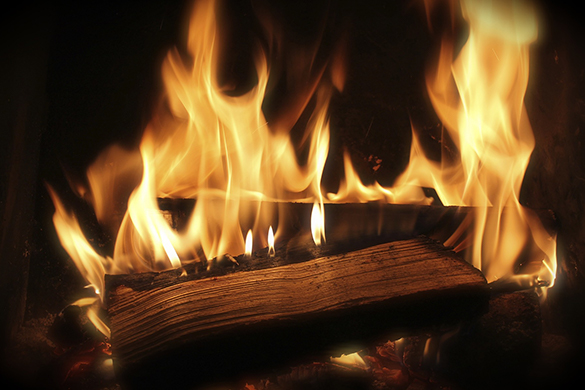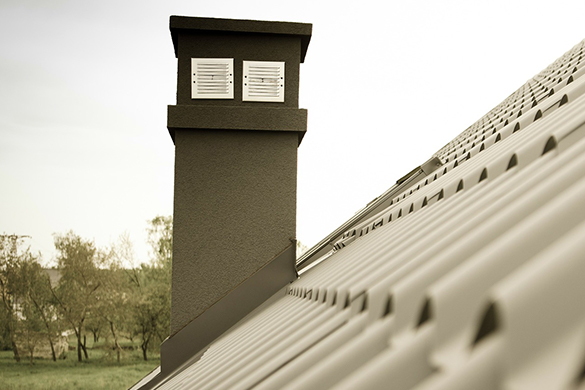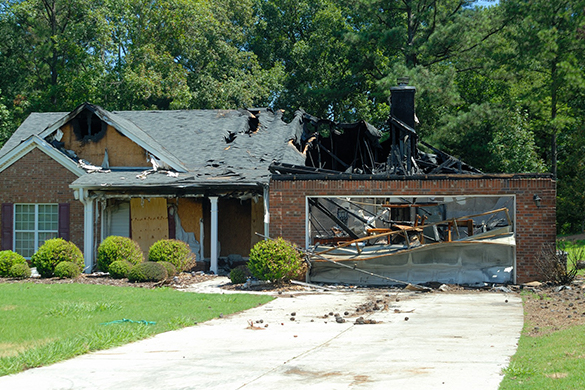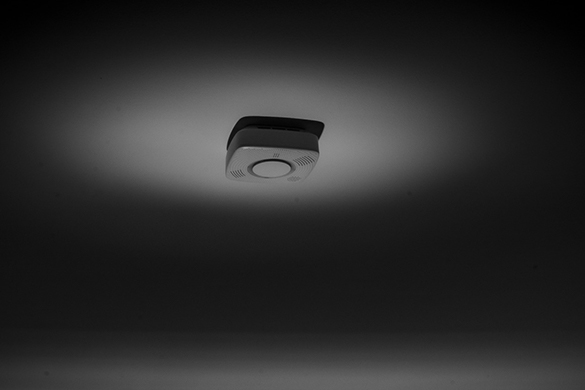Avoid igniting a dangerous house fire due to using a poorly maintained fireplace. Knowing how to clean and maintain your fireplace will keep you and your loved ones safe and warm.

homeandgardeningguide.com gathered the following fireplace maintenance information and safety tips to help you avoid severe personal injury or catastrophic fire damage to your home.
Wood-burning Fireplace Maintenance
The mesmerizing crackle and warmth of a wood-burning fireplace is often the lure for family time in your living or family room. Consider the following maintenance tasks to help prevent fire from spreading outside of the fireplace:
Clean Out the Firebox – After each use, the remaining ash should be removed from the firebox and carefully disposed of in a fireproof container. Wait a minimum of twelve hours after the fire has died out to ensure the ash is no longer hot.
Tip: Add cold ash to soil, a compost pile, or potted plants to enhance their nutrient profile.
Remove Soot and Creosote – Burning wood naturally produces soot and creosote. This is the dark residue coating the firebox walls and the chimney lining. This buildup needs to be removed after each burn season or when the residue reaches 1/8 inch thick. Creosote and soot buildup is highly flammable, and creosote buildup is a significant contributing cause of dangerous chimney fires.
Check the Chimney and its Cap – A properly functioning chimney is vital for an efficiently working fireplace. For a masonry or metal chimney, it is essential that you regularly check it for cracks, dents, or deterioration, as these could be signals of a more significant issue.

Your chimney has a cap typically made from stone or metal and is designed to prevent water, wildlife, and other materials out of your chimney. Caps will normally have a screen on the side, which functions as a spark arrester.
Tip: Check your cap and its screen annually, replacing them when necessary.
Keep a Fire Extinguisher Readily Available – Keep a class A extinguisher near your wood-burning fireplace in case of a chimney fire or to extinguish an uncontrolled burn. Maintain a class B fire extinguisher when the fireplace’s fuel source is a combustible gas or liquid like ethanol or propane. Gas-fueled flames typically burn out fairly quickly when their fuel source is eliminated. However, they can spread remarkably fast if not halted.

When You Need to Put the Fire Out (non-emergency) – To safely and effectively extinguish a fire in your fireplace, use the following steps:
- Spread out the remaining fuel and embers with your poker.
- Bury the fuel and embers with ash with your fireplace shovel.
- Generously cover the fuel and embers with baking soda.
Note: The sodium bicarbonate in baking soda is the same extinguishing component used in many fire extinguishers.
Avoid Flammable Flooring – What is in front of your fireplace? Hot ambers can be launched out of your fireplace when air pockets burst (cracking or popping sound). Keep these ambers from igniting a carpet fire by installing ceramic tile or a non-flammable rug in front of your fireplace.
Absolutely No Vacuums – Never use a vacuum to clean up or remove ashes. Live coals may remain in those ashes, potentially causing your equipment to malfunction or erupt in flames.
Hire a Professional Chimney Sweep – After about 65 to 80 fires, hire a professional chimney sweep to clean your fireplace and chimney. Hiring this service benefits you in that problems, and potential structural failures can be detected far enough in advance to avoid costly damages and repairs.

Test Your Fireplace Before Use – Verify that your fireplace is functioning properly before you start using it. Light a couple small pieces of wood and follow the smoke. If it is drawn through the chimney, it stands to reason that your fireplace is ready to go.
However, if smoke backs up into the room, troubleshoot and solve the problem before using the fireplace in any capacity. Common issues causing this could be:
- An obstruction in the chimney duct
- Too much creosote or soot buildup
- Closed damper
Note: Clean chimneys do not catch fire.
Tip: Test your fireplace multiple times through the burning season and request professional help when necessary.
Install Carbon Monoxide Detectors and Smoke Alarms – Your wood-burning fireplace could be a potential health hazard. A properly installed and maintained fireplace shouldn’t give you any problem. However, issues like carbon monoxide poisoning can occur when you have an obstructed chimney or ventilation system. Carbon monoxide is an odorless and colorless gas making it more difficult for people to detect it.

Smoke inhalation is another potential health hazard that comes with having a fireplace in your home. Smoke is typically released through the chimney unless it is obstructed, and that’s when smoke backs up into your home. To ensure your safety and the safety of your loved ones, install a carbon monoxide detector and a smoke alarm.
Fireplace Safety and Maintenance
In this article, you discovered wood-burning fireplace maintenance information and safety tips to keep your fireplace in its best working condition.
Keeping your wood-burning fireplace in its best condition will help you enjoy a multitude of safe, cozy, and warm fires throughout the winter months.
Allowing your fireplace to build up soot and creosote or develop cracks and fissures can lead to violent chimney fires causing deadly home fires.
Sources:
oaklandcc.edu/news/press-releases/fireplacesafetytips.aspx
www.epa.gov/burnwise/wood-burning-installation-and-maintenance
firesafe.sc.gov/weekly/fireplace.pdf
fema.gov/fact-sheet/chimney-fire-precautions
Visit http://www.homeandgardeningguide.com/repairs/fireplace/ for more fireplace articles, resources and how-to tips.
The post Fireplace Maintenance and Safety Tips appeared first on http://www.homeandgardeningguide.com
No comments:
Post a Comment